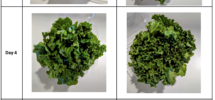Emma Stebbins, Her Iconic Central Park Sculpture, and a Trailblazing Life
In the heart of Central Park stands one of New York City’s most beloved landmarks: the Angel of the Waters. Since 1873, this serene statue has graced the Bethesda Fountain, admired by millions for its beauty. But beyond its aesthetic appeal, the Angel of the Waters symbolizes love, healing, and renewal, reflecting the purpose behind its creation. The fascinating story of its sculptor, Emma Stebbins, is not just one of artistic triumph but also an inspiring tale of a woman who pursued her passion in a time when few opportunities existed for women in her field.

Emma Stebbins: The Woman Behind the Angel of the Waters
Born into a wealthy New York family in 1815, Emma Stebbins was encouraged to develop her artistic talent. She initially studied painting at the National Academy of Design, but soon discovered her true calling in sculpture. However, 19th-century America offered few opportunities for women in this field. There were no formal sculpture schools for women, and they were barred from studying live models, a critical component of sculpting training.
In 1856, Stebbins moved to Rome, where many American artists, particularly women, found a more welcoming environment to hone their craft. Rome was the center of neoclassical art, and it offered opportunities that were unavailable in the U.S. There, she met Harriet Hosmer, a leading American female sculptor, and joined a vibrant community of expatriate artists.


Love and Life in Rome
It was also in Rome that Emma met Charlotte Cushman, one of the most famous actresses of her time, known for her Shakespearean performances. The two women developed a deep personal and professional relationship. They lived together openly as a couple, which was quite remarkable in an era when same-sex relationships were neither discussed nor accepted by mainstream society. Cushman’s support extended beyond their personal relationship—she also helped promote Emma’s work and guided her through the business aspects of an artistic career.
Their relationship was a defining aspect of Stebbins’ life, both personally and professionally. Together, they created a life that allowed Stebbins to pursue her art in a supportive and nurturing environment.
The Creation of the Angel of the Waters
Emma Stebbins is best known for her Angel of the Waters statue, which sits atop the Bethesda Fountain in Central Park. This commission was a significant achievement, as it was the only sculpture for which Central Park paid directly. The fountain was designed to celebrate the arrival of clean water to New York City via the Croton Aqueduct in 1842, a development that drastically improved public health by reducing waterborne diseases.


The “Angel of the Waters”, with its outstretched arms and serene expression, holds a lily—a symbol of purity—and blesses the water below. Stebbins’ decision to create an androgynous figure, blending both masculine and feminine qualities, was a bold and innovative choice for the time. The statue’s unique style set it apart from other works of public art, as Stebbins referred to the angel as “she,” giving it a distinctly feminine energy.
While Stebbins’ brother Henry, a commissioner for Central Park, likely played a role in securing her the project, she was already a respected artist by that time. Her earlier works, including statues of a sailor and a miner, had earned her critical praise. She was also the first American sculptor to depict working-class figures in their everyday attire, further establishing her reputation as an artist unafraid to push boundaries.
A Life of Innovation
Emma Stebbins’ artistic achievements went beyond the “Angel of the Waters.” She was the first American sculptor to create a nude male statue, “The Lotus Eater,” based on a poem by Alfred Lord Tennyson. Although the full statue has been lost, several busts still remain. Stebbins also created statues of public figures, such as Horace Mann, the father of public education in America, whose statue still stands outside the Massachusetts State House in Boston.


Emma’s relationship with Charlotte Cushman played a crucial role in her artistic journey. Cushman’s guidance and social influence helped Stebbins navigate the challenges of the art world, allowing her to create works that broke new ground for American sculpture. After Cushman’s death in 1876, Stebbins focused her energy on writing a biography of her partner, stepping back from sculpting to honor their shared life.
Rediscovery of Emma Stebbins
Italian-born journalist Maria Teresa Cometto, based in New York City, has written extensively about Stebbins in her book Emma and the Angel of Central Park. A regular contributor to Corriere della Sera, Italy’s leading newspaper, Cometto has brought renewed attention to Stebbins’ life and work. Her book highlights the captivating story of Stebbins’ life in Rome, her artistic achievements, and the enduring significance of her art.


Cometto’s efforts have contributed to a resurgence of interest in Stebbins’ work. In 2025, the Heckscher Museum of Art will hold the first-ever exhibition dedicated solely to Stebbins’ work, celebrating her contributions to American sculpture and offering the public a deeper understanding of her artistic journey.
Conclusion
Emma Stebbins’ “Angel of the Waters” remains a symbol of love, healing, and artistic vision in New York City. Her life, filled with personal challenges and groundbreaking achievements, reflects the strength and courage it took to pursue a career in art at a time when opportunities for women were limited. Through her art, Emma Stebbins left an enduring mark on both the cultural landscape of New York City and the broader world of sculpture.
As the Bethesda Fountain continues to captivate visitors from around the world, the story of Emma Stebbins—a woman ahead of her time—remains an inspiring reminder of the power of art to transform and uplift. Whether through her iconic statue in Central Park or her other lesser-known works, Emma Stebbins continues to be recognized and celebrated for her remarkable contributions to the world of art.
Books about Outstanding Italian Women
Italian women storytellers from the 1900s
Two trailblazing women in the 19th century
A woman of Palazzo Farrattini in Amelia
Chewing the Fat: Italian women – and food – during the second world war
The magic of Pasta Grannies


You may also be interested in:


